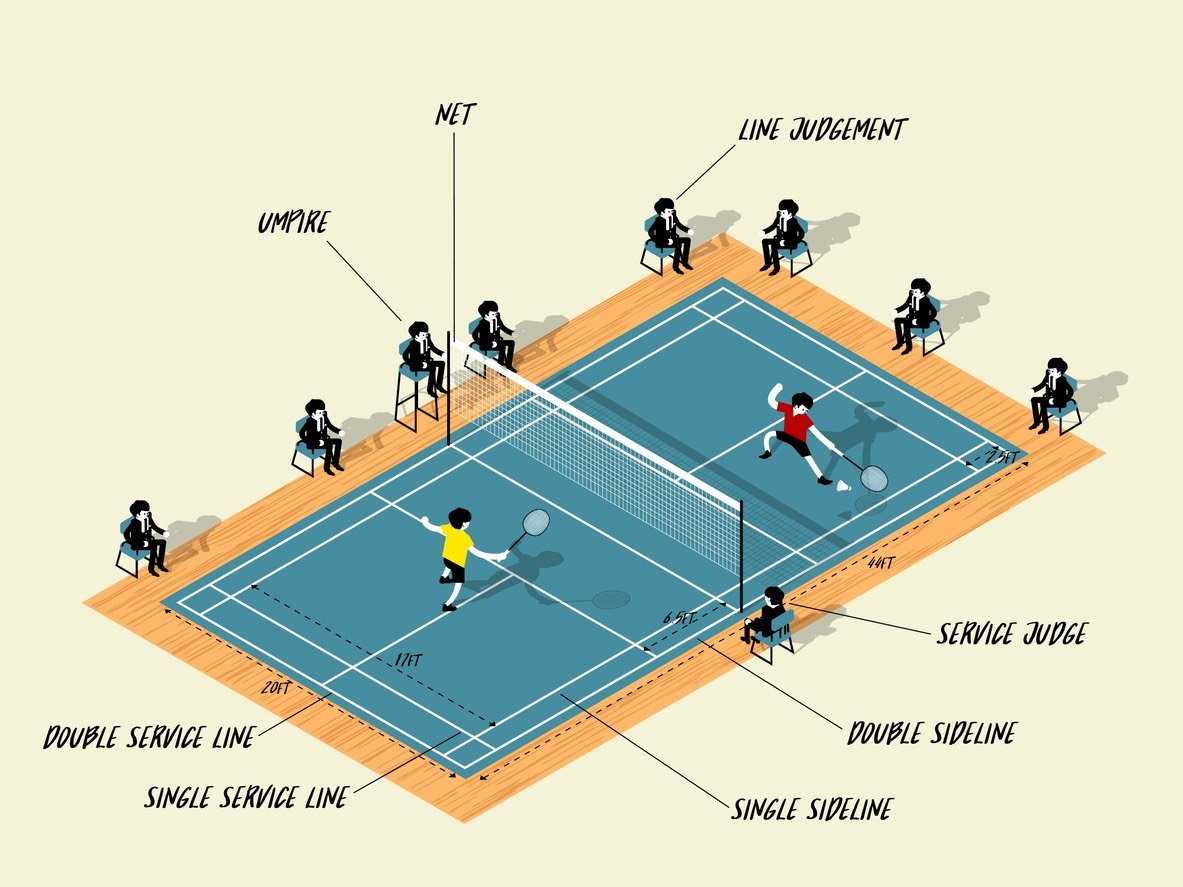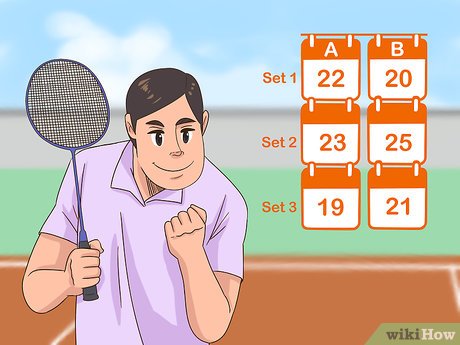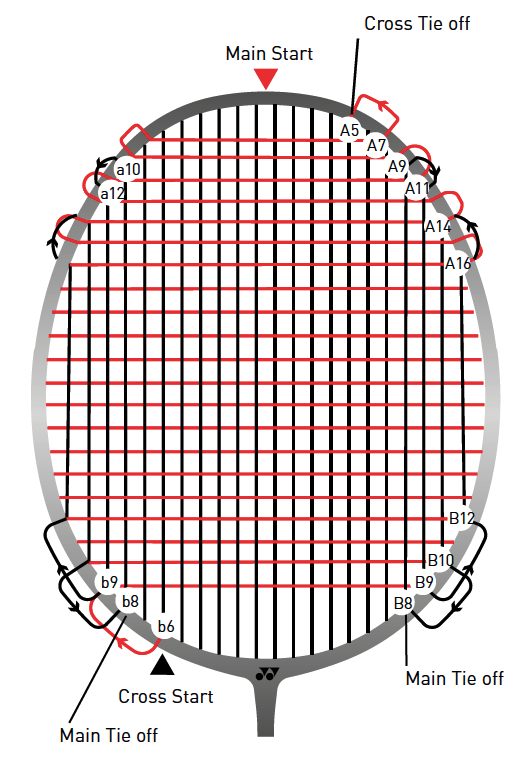Scoring in badminton can seem tricky at first, but it’s straightforward. The game has specific rules that determine how points are won.
Badminton is a fast-paced sport that requires quick thinking and agility. Understanding how to score is crucial for any player, whether a beginner or advanced. Knowing the scoring system helps you strategize and play more effectively. In this blog post, we’ll break down the rules of scoring in badminton.
You’ll learn the basics of how points are awarded and what to keep in mind during a match. By the end, you’ll have a clear understanding of how to keep score and improve your game. Let’s dive into the world of badminton scoring!
Introduction To Scoring
Understanding how to score in badminton is vital for any player. Scoring rules ensure fair play and determine the winner. This guide will walk you through the basic rules and point system in badminton. Let’s dive in!
Basic Rules
Badminton matches are played to the best of three games. Each game is played to 21 points. Players serve from the right side when their score is even and from the left side when their score is odd. A rally starts with a serve and continues until the shuttlecock hits the ground.
If the shuttlecock lands outside the court, the rally ends. The player who did not hit the shuttlecock out wins the point. Players switch sides after each game. If the score reaches 20-20, the game continues until one player leads by two points.
Point System
In badminton, each rally results in a point. The player who wins the rally scores a point. The first player to reach 21 points wins the game. If the score is 20-20, the game goes into extra points. The first player to lead by two points wins the game.
The winner of the rally also gets to serve next. Keeping track of the score is crucial. Both players must know their scores to serve from the correct side. Always remember, consistency and focus can help you win the game.

Credit: www.badmintonplanet.com
Serving Techniques
Serving is a key part of badminton. It starts every rally and can set the tone for the game. A good serve can put your opponent on the back foot. Let’s dive into the different serving techniques that can give you an edge.
Types Of Serves
Knowing the different types of serves is essential. Each type can be used in different scenarios to catch your opponent off guard.
- High Serve: Hit the shuttle high and deep into the opponent’s court. Ideal for singles play.
- Low Serve: Send the shuttle just over the net. Useful in doubles to prevent smashes.
- Flick Serve: A quick, deceptive serve aiming for the back of the court.
- Drive Serve: A fast, flat serve aimed at the opponent’s body. Forces a quick reaction.
Effective Serve Strategies
Different strategies can be used for serving. These can confuse your opponent and gain you an advantage.
- Vary Your Serves: Mix high, low, and flick serves. This keeps the opponent guessing.
- Target Weak Spots: Aim for areas where your opponent is weak. This could be their backhand or an awkward angle.
- Use Deception: Fake a low serve and then flick the shuttle. This can catch the opponent off guard.
- Consistent Practice: Practice your serves regularly. Consistency is key to mastering any serve.
Mastering these serve techniques and strategies can greatly improve your game. Practice each type of serve and use various strategies to keep your opponent on their toes. Remember, a good serve is your first step to winning a point.
Footwork Mastery
Mastering footwork is crucial for excelling in badminton. Proper footwork allows players to reach the shuttlecock with ease, maintain balance, and execute powerful shots. This section will delve into the basics and advanced aspects of footwork mastery.
Basic Footwork Drills
Basic footwork forms the foundation of your game. Practicing these drills regularly will improve your agility and positioning on the court.
- Side-to-Side Shuffles: Stand in the center of the court. Shuffle quickly to the right, then back to the center, and then to the left. Repeat for 1-2 minutes.
- Front-to-Back Movements: Start at the center line. Move forward quickly to the net, then back to the baseline. Repeat this sequence for 1-2 minutes.
- Shadow Drills: Mimic the movements used in a match without a shuttlecock. Focus on smooth transitions and maintaining balance.
Advanced Movement
Once you have mastered basic drills, advance your footwork skills with more complex movements.
- Scissor Kick: Used for overhead shots. Cross your feet and twist your body to generate power.
- Split Step: A small hop just before your opponent hits the shuttle. It prepares you to move in any direction.
- Recovery Steps: After a shot, use quick, small steps to return to the ready position.
| Footwork Drill | Purpose | Duration |
|---|---|---|
| Side-to-Side Shuffles | Improve lateral movement | 1-2 minutes |
| Front-to-Back Movements | Enhance forward and backward agility | 1-2 minutes |
| Shadow Drills | Practice match-like movements | 3-5 minutes |
| Scissor Kick | Generate power for overhead shots | 1-2 minutes |
| Split Step | Prepare for quick direction changes | 1-2 minutes |
| Recovery Steps | Return to ready position quickly | 1-2 minutes |
With consistent practice, these drills will become second nature. Your movement on the court will be smooth and efficient, allowing you to play at your best.
Smash Techniques
Smash techniques in badminton help you score points effectively. Aim for the opponent’s weak spots with powerful, angled shots. Quick wrist action and proper footwork are key.
Power Smash
The power smash is a potent offensive shot in badminton. It involves a forceful downward swing to send the shuttlecock hurtling towards the opponent. To execute a power smash effectively, focus on timing and wrist action.
Drop Smash
The drop smash is a deceptive shot that combines power and finesse. It requires a quick wrist snap and a sudden change in direction to catch your opponent off guard. Mastering the drop smash can give you a strategic advantage on the court.
Defensive Play
Defensive play in badminton is crucial for maintaining control. It helps you turn a difficult situation into an opportunity to score. Strong defensive skills make it hard for your opponent to win points. Let’s explore key defensive techniques to improve your game.
Blocking Techniques
Blocking techniques are vital in badminton defense. Use your racket to absorb the shuttle’s speed. This reduces the shuttle’s momentum, making it harder for your opponent to attack. A gentle push can guide the shuttle over the net. Keep your grip relaxed for better control.
Another technique is the soft block. Use it to return a smash with a light touch. This technique keeps the shuttle low and close to the net. It forces your opponent to lift the shuttle, giving you a chance to attack. Consistent practice of blocking techniques will enhance your defensive play.
Defensive Stance
Your stance is the foundation of effective defense. A good defensive stance prepares you for quick movements. Stand with your feet shoulder-width apart. Bend your knees slightly. Stay on your toes for better agility.
Keep your racket in front of you at chest height. This position allows you to react swiftly to shots. Focus on the shuttle and maintain balance. A strong stance ensures you can defend against powerful smashes and quick shots. Practice maintaining this stance during games to improve your defensive skills.

Credit: www.wikihow.com
Net Play Strategies
Net play is a crucial aspect of badminton. It requires precision, quick reflexes, and strategic thinking. Mastering net play can give you an edge over your opponent. Let’s explore some effective net play strategies.
Net Shots
Net shots are delicate, controlled shots. They drop the shuttle just over the net. This forces your opponent to move quickly. Use a soft touch to execute these shots. Keep your wrist relaxed. Aim to make the shuttle fall close to the net. This limits your opponent’s options. They might lift the shuttle, giving you a chance to attack.
Net Kills
Net kills are aggressive shots. They are used to finish rallies. When the shuttle is close to the net, use a quick, downward motion. This sends the shuttle steeply down. Your opponent will have little time to react. Always stay alert near the net. Look for opportunities to perform net kills. Stay ready to pounce and end the rally swiftly.
Mental Toughness
Mental toughness is vital in badminton. It helps players stay focused, handle pressure, and perform at their best. Developing mental strength can be the difference between winning and losing. Let’s explore two key aspects of mental toughness: staying focused and handling pressure.
Staying Focused
Badminton matches can be long and intense. Staying focused throughout is crucial. Here are some tips to maintain focus:
- Set small goals: Aim to win each point rather than the whole match.
- Concentrate on the shuttlecock: Watch it closely to predict its movement.
- Stay in the moment: Don’t dwell on past mistakes or future outcomes.
- Use positive self-talk: Encourage yourself with positive thoughts.
These strategies can help you stay focused and improve your performance.
Handling Pressure
Handling pressure is another aspect of mental toughness. High-pressure situations are common in badminton. Here’s how to manage them:
- Practice under pressure: Simulate match conditions during practice.
- Control your breathing: Deep breaths can calm your nerves.
- Visualize success: Imagine yourself playing well and winning.
- Stay positive: Focus on your strengths and past successes.
By mastering these techniques, you can stay calm and perform well under pressure.

Credit: keepthescore.com
Training And Conditioning
Training and conditioning play a crucial role in improving your badminton skills. A well-structured training program helps you to build strength, enhance endurance, and improve overall performance. Consistent practice and the right exercises will make you a better player.
Strength Training
Strength training is essential for any badminton player. It helps in improving your power, speed, and agility. Focus on exercises that target your legs, core, and upper body. Squats, lunges, and deadlifts are great for building leg strength. Core exercises like planks and sit-ups help in maintaining balance and stability.
Strength training should be done at least three times a week. It helps you to generate powerful smashes and quick movements on the court. Don’t forget to include exercises for your arms and shoulders. Push-ups, pull-ups, and shoulder presses are very effective.
Endurance Drills
Endurance drills are vital for lasting through long matches. They help you maintain energy and performance levels. Incorporate running, cycling, and skipping into your routine. These activities improve your cardiovascular fitness and stamina.
Interval training is highly recommended. It involves short bursts of intense activity followed by rest. This mimics the stop-start nature of a badminton game. Shuttle runs and ladder drills are excellent for improving footwork and endurance.
Consistency is key. Aim to perform endurance drills at least four times a week. This will prepare your body for the physical demands of competitive play.
Analyzing Opponents
Understanding your opponent’s game is crucial in badminton. Analyzing their strengths and weaknesses allows you to adapt your strategy. This can give you an edge and help you score more points. Let’s delve into identifying weaknesses and adapting strategies to outplay your opponent.
Identifying Weaknesses
To identify an opponent’s weaknesses, observe their movements and reactions. Look for patterns in their game. Here are key areas to focus on:
- Footwork: Do they move quickly around the court?
- Backhand: Are their backhand shots weak?
- Stamina: Do they tire easily during long rallies?
- Serve: Do they have a predictable serve?
Keep mental notes or write down observations. This helps in forming a clear picture of their vulnerabilities.
Adapting Strategies
Once you’ve identified their weaknesses, adapt your strategy. Tailor your game plan to exploit these areas. Here are some strategies:
- Target Weak Areas: Hit towards their weak backhand or slow footwork.
- Vary Shots: Mix up your shots to confuse them.
- Extend Rallies: If they have low stamina, play longer rallies.
- Anticipate Predictable Shots: Capitalize on their predictable serves or returns.
Adapting your strategies based on these observations can increase your chances of winning points. Continually assess and adjust as the game progresses.
Frequently Asked Questions
What Is The Basic Scoring System In Badminton?
In badminton, a match consists of the best of three games. Each game is played to 21 points. Players score points by winning rallies.
How Do You Win A Rally In Badminton?
You win a rally by making the shuttlecock land in your opponent’s court. It can also be won if the opponent commits a fault.
What Happens At 20-all In Badminton?
At 20-all, the game continues until one player leads by two points. This ensures a clear winner for each game.
Can You Score Points When Not Serving In Badminton?
Yes, in badminton, you can score points regardless of who is serving. This is known as the rally point system.
Conclusion
Scoring in badminton takes practice and strategy. Focus on your footwork. Improve your serves and returns. Remember to stay alert and agile. Watch your opponent’s movements closely. Each point counts, so play with determination. Keep practicing, and you will see progress.
Enjoy the game and have fun. Happy playing!



